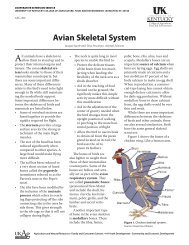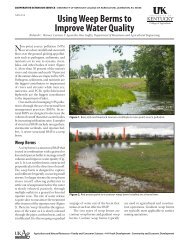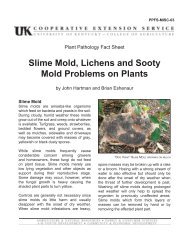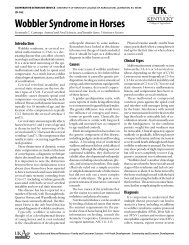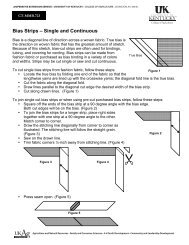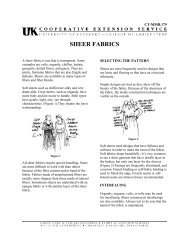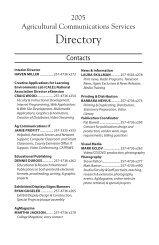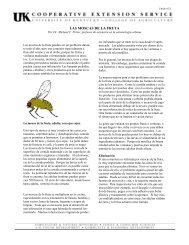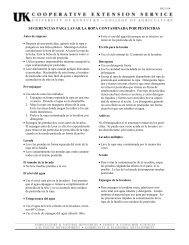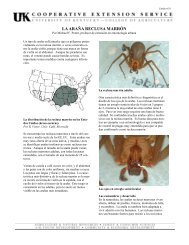Chapter 3 - CHICKEN ANATOMY AND PHYSIOLOGY
Chapter 3 - CHICKEN ANATOMY AND PHYSIOLOGY
Chapter 3 - CHICKEN ANATOMY AND PHYSIOLOGY
You also want an ePaper? Increase the reach of your titles
YUMPU automatically turns print PDFs into web optimized ePapers that Google loves.
The key to the avian respiratory system is that distention and compression of the air<br />
sacs, not the lungs, moves air in and out. At any given moment air may be flowing into<br />
and out of the lung and being ‘parked’ in the air sacs (see Figure 3.8). The lungs are stiff<br />
and fixed, not at all like the distensible lungs of mammals. The air sacs act as ‘bellow’s<br />
to suck air in and blow it out and also to hold part of the total volume. The air sacs fill a<br />
large proportion of the chest and abdominal cavity of birds, and also connect to the air<br />
spaces in the bones.<br />
3.8<br />
Figure 3.8 - The flow of air through the avian respiratory system.<br />
1. On first inhalation, air flows through the trachea & bronchi, primarily into the<br />
posterior (rear) air sacs<br />
2. On exhalation, air moves from the posterior air sacs into the lungs<br />
3. With the second inhalation, air moves from the lungs into the anterior (front) air<br />
sacs<br />
4. With the second exhalation, air moves from the anterior air sacs back into the<br />
trachea and then out<br />
Figure 3.9 - Diagram showing movement of sternum and ribs during respiration<br />
A. Inspiration; B. Expiration; C. Sternum (keel)



